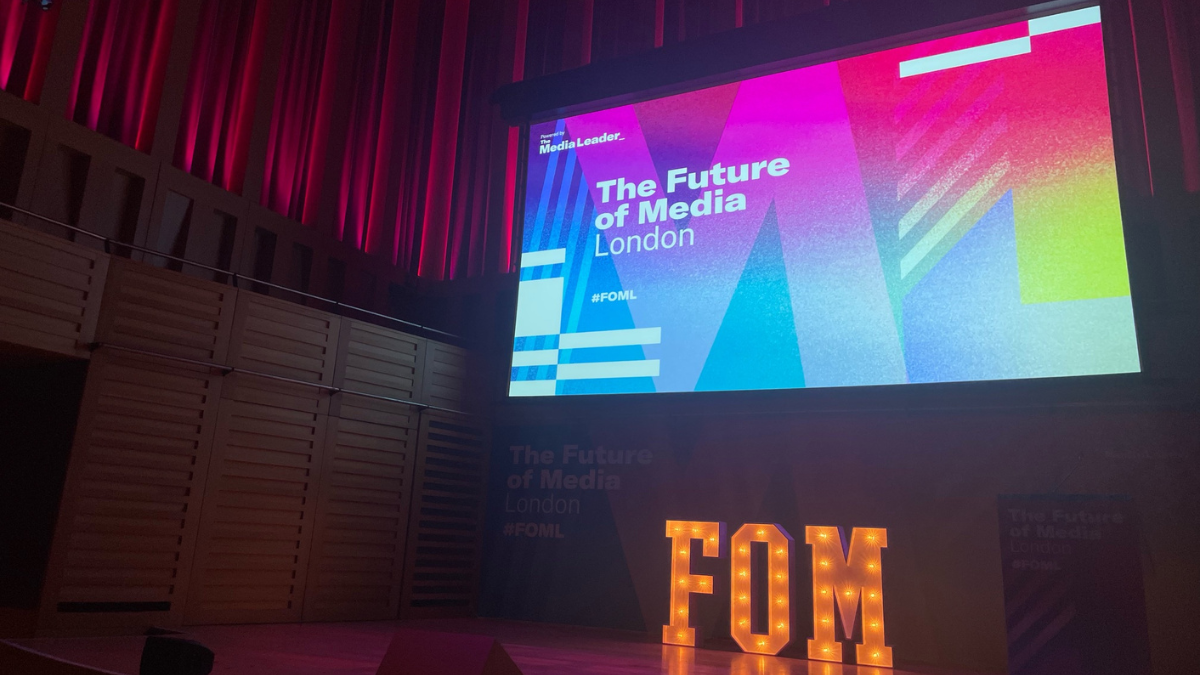The Future of Media, Adwanted’s annual event dedicated to the future of commercial media, kicked off today, bringing together hundreds of senior leaders from across the media industry. Powered by The Media Leader, the day’s discussions focused on media effectiveness and media measurement.
The event opened with a keynote session around the changing media and advertising landscape. Talking about the growth rate of various media channels, Omdia’s Max Signorelli revealed that by 2029 the online ad market will constitute around 80% of global ad spend. Within online; paid search, non-video display and video display are projected to have the biggest shares, with video skewing heavily to social. Retail media is set to reach $30m by 2029, with Amazon dominating around 66% of the market.
ISBA’s Phil Smith shared the stage with The Media Leader’s Omar Oakes to discuss the launch of Origin, the trade association’s cross-media measurement tool that aims to provide real-time campaign data across YouTube, Meta and linear TV. ISBA rolled out Origin last month to 35 of the UK’s biggest advertisers, following the period of “alpha” trials in which 5 advertisers used synthetic media to test out the tool. In response to the criticisms from the industry that the trade association has launched Origin without using Barb data, Smith stated that Origin ‘is not designed to replace any other currency’ and that ISBA’s working on integrating Origin with Barb, the UK’s established TV audience measurement body. The cross-media measurement tool will be available to all advertisers in 2025.
One of the day’s most popular sessions was held by Tim Miles, SVP at Global Sync, Warner Music Group. Miles’ session fit perfectly within the conference’s topic stream ‘where media and creativity collide’, exploring how brands can use music to tell stories, drive consumption and attract bigger audiences. Arguing that music is a powerful tool for storytelling, Miles shared that people react 17% faster to sound than visuals. He revealed that 14% of people are also more likely to purchase a product when paired with popular music, as opposed to only 8% when the audio is not recognisable. Giving a few examples of successful brand and artist collaborations, Miles pointed to Ed Sheeran x Pokemon Go, Lizzo x Absolut, and Stormzy x Ubisoft for Watch Dogs: Legion.
Another high-rated speaker was Bicycle’s Graeme Douglas. In a session titled ‘How to sell more pizza by forgetting everything you know about advertising’, Douglas shared how Bicycle is helping Papa John’s compete against Domino’s when their advertising budget is £32m smaller. Instead of relying on traditional metrics, Papa John’s focuses on incrementality, multi-audience planning, attention-grabbing stunts, event-driven relevance and AI-driven creativity. For this reason, Douglas said that ‘reach, frequency, and impressions are a total waste of time’.
Featured image: The Future of Media

